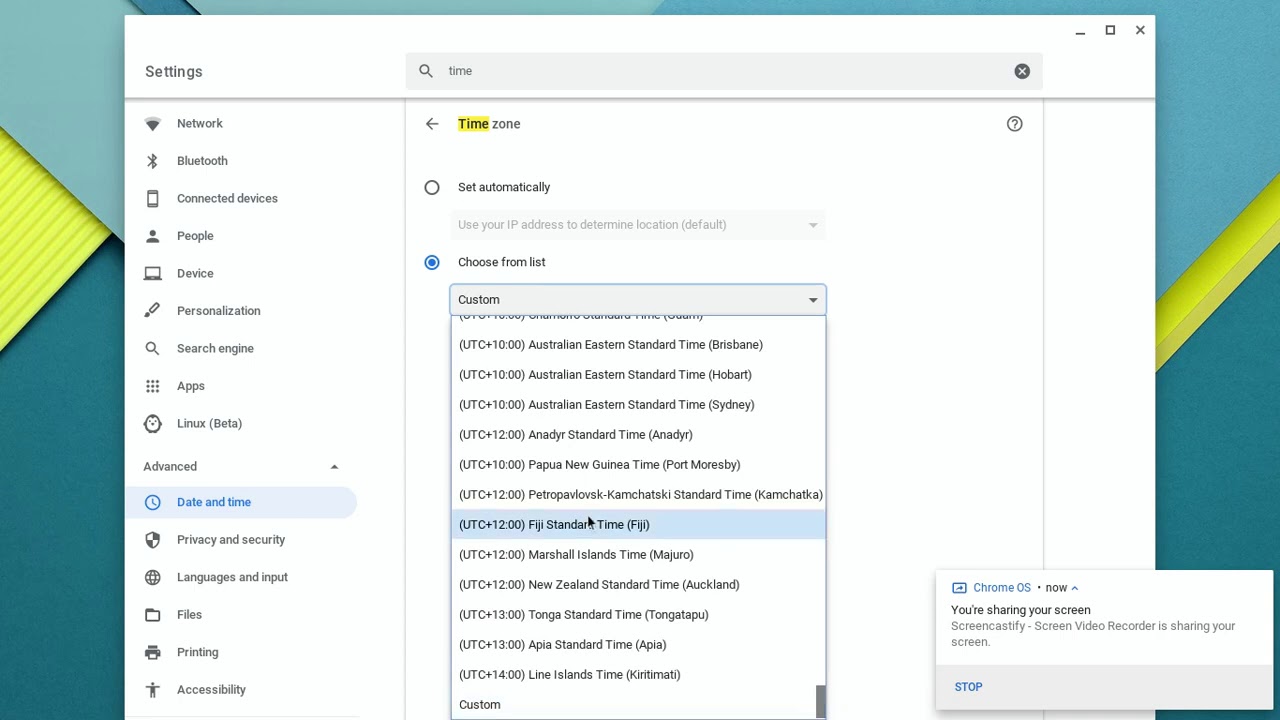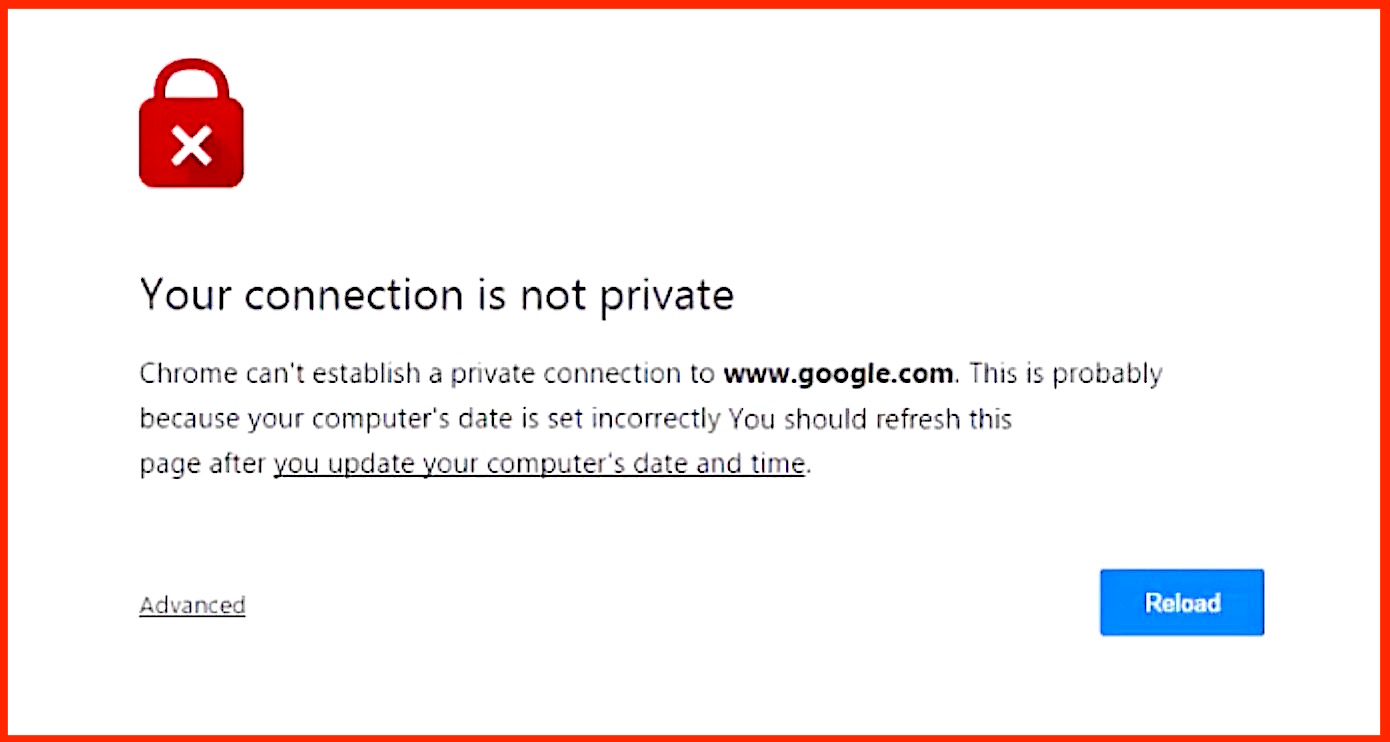Introduction
Changing the time zone on Chrome can be a crucial task, especially for individuals who frequently travel or work with teams across different regions. Whether you're a digital nomad, a remote worker, or simply adjusting to daylight saving time, knowing how to change the time zone in your Chrome browser can significantly enhance your browsing experience. By aligning the time zone settings with your current location, you can ensure that timestamps, schedules, and time-sensitive information accurately reflect your local time.
In this comprehensive guide, we will walk you through the step-by-step process of changing the time zone on Chrome. Whether you're using Chrome on a desktop, laptop, or mobile device, the procedure remains consistent, allowing you to seamlessly adjust the time zone across various platforms. By following these simple instructions, you can effortlessly synchronize your browsing experience with your current geographical location, thereby avoiding any confusion related to time-sensitive activities.
Let's delve into the details of how to navigate Chrome's settings to modify the time zone, ensuring that your browsing experience remains in sync with your current location. Whether you're a frequent traveler, a remote worker, or simply seeking to streamline your browsing experience, mastering this process will undoubtedly prove to be a valuable skill in managing your online activities effectively.
Step 1: Open Chrome Settings
To begin the process of changing the time zone on Chrome, the first step is to access the browser's settings. This can be easily accomplished by clicking on the three-dot menu icon located in the top-right corner of the Chrome window. Upon clicking this icon, a drop-down menu will appear, presenting a range of options for customizing and managing your browsing experience.
Once the drop-down menu is displayed, navigate your cursor to the "Settings" option and left-click to access the settings page. Alternatively, you can directly type "chrome://settings/" into the address bar and press Enter to instantly land on the settings page. This method provides a quick and direct route to the settings, bypassing the need to navigate through the drop-down menu.
Upon reaching the settings page, you will be presented with a plethora of customization options, allowing you to tailor your browsing experience to your preferences. The settings page is designed to be user-friendly, with a clear layout that facilitates easy navigation and customization. From managing privacy and security settings to customizing appearance and functionality, the settings page serves as a centralized hub for optimizing your Chrome browser.
By successfully accessing the Chrome settings, you have completed the first crucial step in the process of changing the time zone. This initial step sets the stage for the subsequent actions that will enable you to seamlessly adjust the time zone settings to align with your current geographical location. With the settings page now at your disposal, you are ready to proceed to the next step, which involves delving deeper into the advanced settings to modify the time zone according to your specific requirements.
Now that you have successfully accessed the Chrome settings, you are well-positioned to proceed to the next step, which will guide you through the process of modifying the time zone settings to ensure that your browsing experience accurately reflects your current location.
Step 2: Click on "Advanced"
Upon accessing the Chrome settings, the next pivotal step in the process of changing the time zone involves navigating to the "Advanced" section. This section houses a myriad of additional settings and customization options that allow users to delve deeper into the inner workings of the browser, enabling a more tailored and personalized browsing experience.
To locate the "Advanced" section, scroll down the settings page until you reach the bottom. Here, you will find a hyperlink labeled "Advanced," which, when clicked, will expand the settings menu to unveil a plethora of advanced customization options. Alternatively, you can directly type "chrome://settings/advanced" into the address bar and press Enter to swiftly navigate to the advanced settings page, bypassing the need to manually scroll through the settings.
Upon entering the "Advanced" section, you will be greeted with a wealth of additional settings that delve into the intricacies of Chrome's functionality. These settings encompass a wide array of customization options, ranging from privacy and security to system and accessibility features. The "Advanced" section serves as a gateway to a deeper level of customization, allowing users to fine-tune their browsing experience according to their specific preferences and requirements.
One of the key features within the "Advanced" section is the ability to modify time zone settings, which directly impacts how timestamps and time-sensitive information are displayed within the browser. By accessing this section, users gain the ability to seamlessly align their browsing experience with their current geographical location, ensuring that time-related data accurately reflects their local time.
Navigating to the "Advanced" section is a pivotal step in the process of changing the time zone on Chrome, as it unlocks a realm of advanced customization options that empower users to tailor their browsing experience to their precise specifications. By successfully reaching this section, you are now poised to delve deeper into the time zone settings, enabling you to select and modify the time zone to align with your current location.
With the "Advanced" section now within reach, you are ready to proceed to the next step, which involves locating the specific time zone settings within this section and initiating the process of modifying the time zone to ensure that your browsing experience accurately reflects your current geographical location.
Step 3: Locate "Time Zone"
Upon entering the "Advanced" section of the Chrome settings, the next crucial step in the process of changing the time zone involves locating the specific "Time Zone" settings. This step is pivotal in enabling users to pinpoint the precise settings that govern how the browser interprets and displays time-related information, ensuring that it accurately reflects the user's current geographical location.
To locate the "Time Zone" settings, scroll through the advanced settings menu until you encounter the "Date and Time" section. Within this section, you will find the "Time Zone" settings, which dictate how timestamps and time-sensitive data are presented within the browser. The "Time Zone" settings are designed to provide users with the flexibility to align their browsing experience with their current location, thereby ensuring that time-related information is accurately displayed according to their local time.
Upon locating the "Time Zone" settings, users will be presented with a dropdown menu containing a comprehensive list of time zones from around the world. This extensive selection encompasses various regions and cities, allowing users to select the time zone that corresponds to their current geographical location. By offering a diverse array of time zones, Chrome empowers users to seamlessly adjust their browsing experience to align with their specific time zone requirements, catering to a global audience with diverse geographical locations.
The "Time Zone" settings within the Chrome browser serve as a pivotal tool for ensuring that timestamps, schedules, and time-sensitive data are accurately displayed according to the user's local time. By providing a user-friendly interface and a comprehensive selection of time zones, Chrome simplifies the process of modifying the time zone, enabling users to effortlessly synchronize their browsing experience with their current geographical location.
With the "Time Zone" settings now located within the advanced settings menu, users are poised to proceed to the next step, which involves selecting the desired time zone from the dropdown menu. By successfully navigating to this stage of the process, users are one step closer to seamlessly aligning their browsing experience with their current geographical location, ensuring that time-related data is accurately displayed according to their local time.
Now that the "Time Zone" settings have been successfully located within the advanced settings menu, users are ready to proceed to the subsequent step, which will guide them through the process of selecting the desired time zone to ensure that their browsing experience accurately reflects their current geographical location.
Step 4: Select the Desired Time Zone
After successfully locating the "Time Zone" settings within the advanced section of Chrome's settings, the next pivotal step in the process of changing the time zone involves selecting the desired time zone from the dropdown menu. This step is instrumental in ensuring that your browsing experience accurately reflects your current geographical location, aligning timestamps, schedules, and time-sensitive data with your local time.
Upon accessing the dropdown menu for the "Time Zone" settings, users are presented with an extensive list of time zones from around the world. This comprehensive selection encompasses various regions and cities, catering to a diverse global audience with distinct geographical locations. Navigating through the dropdown menu, users can seamlessly scroll through the list of time zones, each representing a specific geographical region and corresponding time offset from Coordinated Universal Time (UTC).
The user-friendly interface of the dropdown menu simplifies the process of selecting the desired time zone, allowing users to effortlessly pinpoint their current geographical location and choose the corresponding time zone. Whether you're situated in a bustling metropolis or a remote corner of the world, the extensive array of time zones ensures that users can accurately align their browsing experience with their specific geographical location.
By selecting the desired time zone from the dropdown menu, users effectively instruct Chrome to interpret and display time-related information according to the chosen geographical region. This action ensures that timestamps, schedules, and time-sensitive data within the browser accurately reflect the user's local time, eliminating any discrepancies related to time zone differences.
The ability to select the desired time zone within Chrome's settings empowers users to seamlessly synchronize their browsing experience with their current geographical location, enhancing the accuracy and relevance of time-related data displayed within the browser. Whether you're traveling, collaborating with individuals across different time zones, or simply seeking to streamline your browsing experience, mastering the process of selecting the desired time zone is a valuable skill in managing your online activities effectively.
With the desired time zone successfully selected from the dropdown menu, users have taken a significant stride towards aligning their browsing experience with their current geographical location. This pivotal action ensures that time-related data within the browser accurately reflects the user's local time, enhancing the relevance and accuracy of timestamps and schedules displayed during online activities.
Now that the desired time zone has been successfully selected within Chrome's settings, users are poised to proceed to the final step, which involves restarting the browser to apply the modified time zone settings. By seamlessly navigating through the process of selecting the desired time zone, users are on the brink of ensuring that their browsing experience accurately reflects their current geographical location, thereby enhancing the relevance and accuracy of time-related data displayed within the browser.
Step 5: Restart Chrome
After successfully selecting the desired time zone within Chrome's settings, the final crucial step in the process of changing the time zone involves restarting the browser to apply the modified settings. This pivotal action ensures that the updated time zone settings take effect, seamlessly aligning the browsing experience with the user's current geographical location.
To restart Chrome, simply navigate to the top-right corner of the browser window and click on the three-dot menu icon. From the drop-down menu, select the "Exit" option to close the browser. Alternatively, you can press "Alt + F4" on your keyboard to swiftly exit Chrome. Once the browser is closed, relaunch Chrome by clicking on the desktop shortcut or searching for Chrome in the system's applications and clicking on the icon to reopen the browser.
Upon relaunching Chrome, the modified time zone settings will be applied, ensuring that timestamps, schedules, and time-sensitive data within the browser accurately reflect the user's local time. This seamless synchronization of the browsing experience with the user's current geographical location enhances the relevance and accuracy of time-related information displayed during online activities.
Restarting Chrome to apply the modified time zone settings is a pivotal step in ensuring that the browsing experience remains in sync with the user's specific geographical location. By seamlessly navigating through this final step, users can confidently engage in online activities knowing that time-related data within the browser accurately reflects their local time, thereby eliminating any discrepancies related to time zone differences.
With Chrome successfully restarted, users can now enjoy a browsing experience that seamlessly aligns with their current geographical location, ensuring that time-related information is accurately displayed according to their local time. Whether you're a frequent traveler, a remote worker, or simply seeking to streamline your browsing experience, mastering the process of changing the time zone on Chrome empowers you to manage your online activities effectively, enhancing the relevance and accuracy of time-related data displayed within the browser.
By following these simple yet pivotal steps, users can effortlessly modify the time zone settings within Chrome, ensuring that their browsing experience accurately reflects their current geographical location. This mastery of time zone customization within Chrome exemplifies the user's ability to seamlessly adapt their browsing experience to align with their specific time zone requirements, thereby enhancing the accuracy and relevance of time-related data displayed within the browser.
Conclusion
In conclusion, mastering the process of changing the time zone on Chrome is a valuable skill that empowers users to seamlessly align their browsing experience with their current geographical location. By following the step-by-step guide outlined in this comprehensive article, users can confidently navigate Chrome's settings to modify the time zone settings, ensuring that timestamps, schedules, and time-sensitive data accurately reflect their local time.
The journey begins with accessing the Chrome settings, where users can delve into the advanced section to locate the specific time zone settings. Navigating through the dropdown menu, users can effortlessly select the desired time zone, effectively instructing Chrome to interpret and display time-related information according to their chosen geographical region. Finally, by restarting the browser, the modified time zone settings take effect, seamlessly aligning the browsing experience with the user's current geographical location.
Mastering the process of changing the time zone on Chrome is particularly beneficial for individuals who frequently travel, collaborate with teams across different time zones, or simply seek to streamline their browsing experience. By ensuring that time-related data within the browser accurately reflects the user's local time, this mastery enhances the relevance and accuracy of timestamps and schedules displayed during online activities.
Furthermore, the user-friendly interface and intuitive navigation within Chrome's settings make the process of modifying the time zone accessible to a diverse global audience. Whether situated in a bustling metropolis or a remote corner of the world, users can seamlessly adapt their browsing experience to align with their specific time zone requirements, catering to a wide range of geographical locations.
Ultimately, the ability to change the time zone on Chrome exemplifies the user's capacity to tailor their browsing experience to their precise specifications, enhancing the accuracy and relevance of time-related data displayed within the browser. By mastering this process, users can confidently manage their online activities, knowing that their browsing experience accurately reflects their current geographical location.
In essence, the journey of changing the time zone on Chrome culminates in a browsing experience that seamlessly aligns with the user's specific geographical location, ensuring that time-related information is accurately displayed according to their local time. This mastery exemplifies the user's ability to navigate and customize their browsing experience, enhancing the relevance and accuracy of time-related data within the browser.














![20 Best Productivity Apps to Get Things Done [PC & Mac]](https://robots.net/wp-content/uploads/2020/05/write-593333_1920-300x177.jpg)










